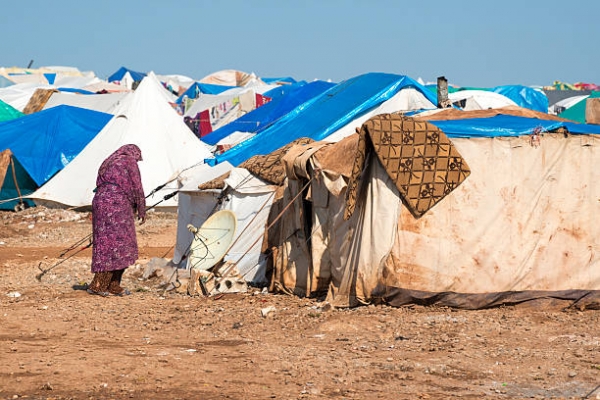The Norwegian Refugee Council (NRC) is an independent humanitarian organization that helps and advocates for displaced people. The non-governmental organization provides camp management, food assistance, clean water, shelter, legal aid, and education in over 30 countries. Additionally, NRC maintains an Internal Displacement Monitoring Centre in Geneva, which is regarded as a global leader in monitoring, reporting on and advocating for individuals displaced within their own country. In 2019, NRC assisted 9.1 million people worldwide. This report was written by Alexandra Saieh, with the assistance of Samah Hadid and the contributions of several others.
The report illustrates the consequences of the ten year civil war on the civilian population in Syria, and reveals the current living conditions of displaced Syrians. It examined the specific drivers of displacement, the present-day living conditions of displaced Syrians, and made predictions regarding the future of Syrian civilians. NRC’s report on the decade-long conflict in Syria incorporated analysis of other published NRC reports regarding the crises Syria has faced over the past ten years, including internal assessments, and program experiences across the region. The authors also consulted secondary data, displacement and resettlement figures, and assessments on livelihood, food insecurity, access to legal residency. The information was substantiated through further analysis of interviews conducted with displaced Syrians in Syria, Jordan, Lebanon and northern Iraq. The report determined that, without a comprehensive ceasefire in Syria and increased humanitarian assistance, the current displacement trends are likely to continue.
In 2011, Syrians took to the streets to protest the Syrian president’s regime, also known as the Assad regime. The protests quickly turned into a full-scale civil war between the Assad regime and civilians who opposed the Syrian government. Today, the war-ravaged state is one of the most severe humanitarian crises in the world, with nearly half a million people killed, over half of the Syrian population displaced, and the destruction of Syrian’s homes and social infrastructure as a result of the conflict, according to the report. The spread of Covid-19 and the effects of the pandemic have further exacerbated humanitarian needs of Syrians. NRC predicts that the next ten years will be characterized by the same patterns of displacement, unless the trajectory of the conflict changes in Syria.
Prolonged conflict, insecurity, and economic factors are the primary drivers of displacement in Syria. Many refugees are living in protracted displacement in nearby countries such as Iraq, Jordan, Lebanon and Turkey. While most yearn to return to Syria some day, there is little indication that they will be able to do so safely anytime soon. Those who have escaped Syria continue to face numerous challenges. Refugees have struggled to obtain legal residency and the legal right to work in their host nations, making it difficult for them to meet their fundamental needs. Additionally, with increasing economic challenges in the region and the closing of borders by some nations in response to the pandemic, resettlement options for Syrians are limited.
In order to avert another decade of devastating conflict, NRC concludes that “all warring parties must institute a permanent, nationwide ceasefire, endorsed by the Security Council and enforced by key Member States supporting the Syrian government and armed groups.” This must be accompanied by a political settlement that is endorsed by all the involved parties. Donor governments and wealthy states should direct adequate funding to each aspect of the humanitarian response within Syria and the surrounding region. Nations who are able to accommodate refugees should increase resettlement places and create initiatives for “access to complementary pathways, such as educational opportunities, humanitarian visas and family reunification.” Most importantly, institutions providing assistance to Syria should ensure that all interventions are guided by the “experiences and perspectives of displaced populations,” in order to sufficiently address the needs of Syrians.
To know more, please read:
www.nrc.no/globalassets/pdf/reports/2021-darkest-decade/darkest-decade/the-darkest-decade.pdf
Author: Sitara Sandhu; Editor: Gabriella Pavlakis




